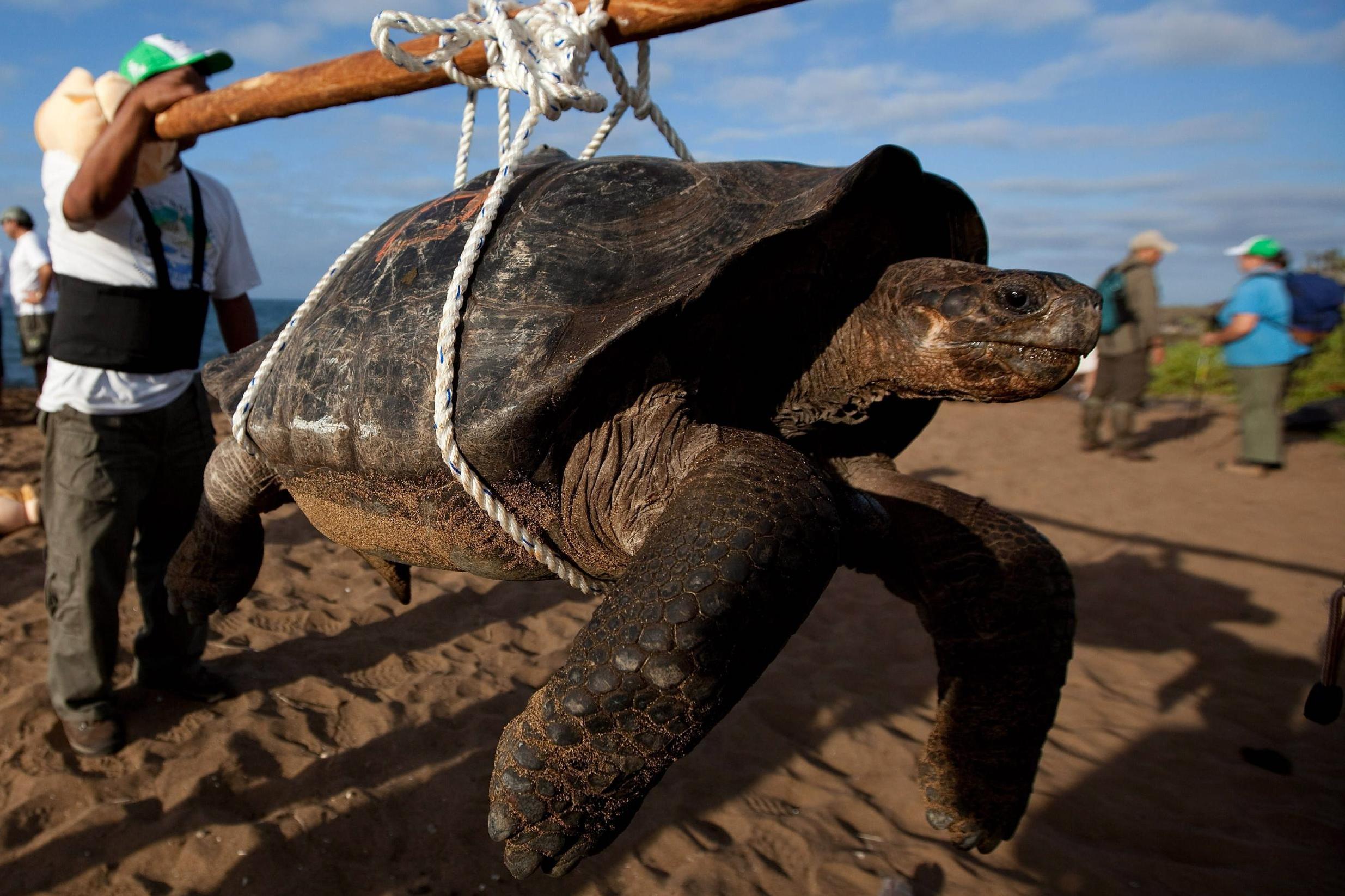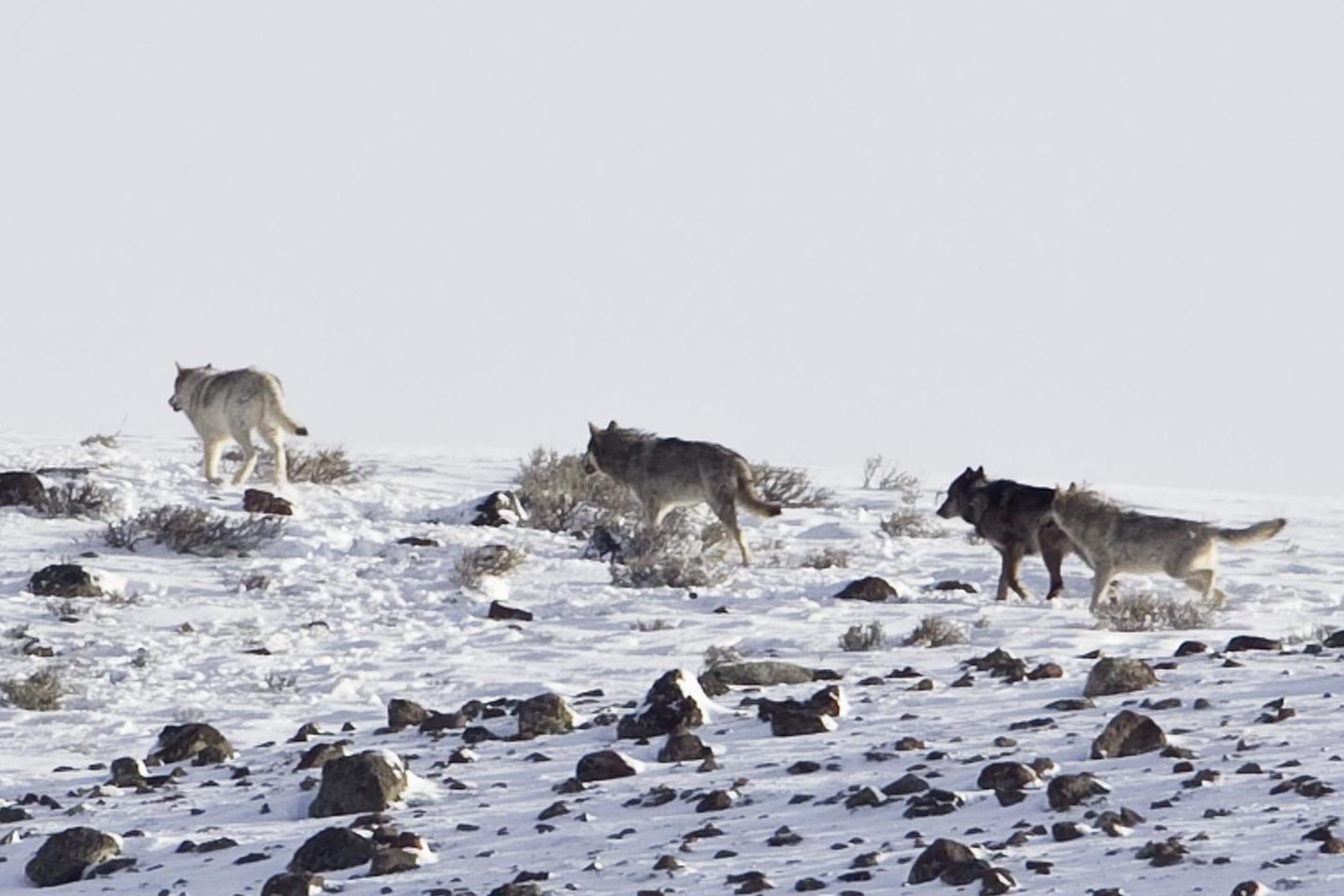Science news in brief: Seeking clues to longevity in Lonesome George's genes
And a roundup of other stories around the world

Your support helps us to tell the story
From reproductive rights to climate change to Big Tech, The Independent is on the ground when the story is developing. Whether it's investigating the financials of Elon Musk's pro-Trump PAC or producing our latest documentary, 'The A Word', which shines a light on the American women fighting for reproductive rights, we know how important it is to parse out the facts from the messaging.
At such a critical moment in US history, we need reporters on the ground. Your donation allows us to keep sending journalists to speak to both sides of the story.
The Independent is trusted by Americans across the entire political spectrum. And unlike many other quality news outlets, we choose not to lock Americans out of our reporting and analysis with paywalls. We believe quality journalism should be available to everyone, paid for by those who can afford it.
Your support makes all the difference.Seeking clues to longevity in Lonesome George’s genes
When Lonesome George, the only survivor of the Pinta Island tortoises of the Galápagos, died in 2012, the news landed with a blow. He had lived for a century or more, a common life expectancy for giant tortoises, and all attempts to mate him during his last few decades were unsuccessful. Recently, a team of scientists researching longevity turned to George for help in this search, mining his genetic code for clues to his long lifespan.
In a paper published recently in Nature Ecology & Evolution, researchers reported preliminary findings of gene variants in George linked with a robust immune system, efficient DNA repair, and resistance to cancer.
Yale University researcher Adalgisa “Gisella” Caccone has spent decades studying the reptiles, which are the size of upright pianos. She received a message from Carlos López-Otín, a professor at the University of Oviedo in Spain who has built a career studying cancer and ageing in humans.
The researchers compared the tortoise genomes with those of mammals, fish, birds and reptiles, looking for discrepancies that could affect ageing. The scientists found evidence that a mutation in a gene called IGF1R, which has been linked with longevity in humans and mice, might contribute to the tortoises’ exceptional lifespan.
They also discovered that the tortoises had more copies of genes related to energy regulation, DNA repair, tumour suppression, and immune defence compared with other creatures.
Generally, having many copies of genes can allow existing functions to occur more efficiently, or provide fuel for the evolution of new functions.

Who’s afraid of the big bad wolf? These fish should be
Wolves may be red-meat eaters but a team of biologists in northern Minnesota has spotted a pack that often enjoys a meal of fish.
It is rare to see wolves catching and eating freshwater fish, although they have been observed eating spawning salmon along the coast of British Columbia and Alaska. The latest discovery, near Voyageurs National Park close to the US border with Canada, was published in the journal Mammalian Biology.
Wolves in Yellowstone have been known to eat trout but it is unclear whether they actually caught the fish or if they were already dead.
“It is exceedingly rare, but they do it,” said Douglas Smith, the park’s wolf biologist.
Wolves were collared by the Voyageurs Wolf Project for research into pack territory and prey, which consists primarily of beavers but also deer fawns and moose calves.
Tom Gable, a doctoral student working on the project, noticed from GPS data that wolves from a pack named Bowman Bay were spending a lot of time near a stream. He trekked into the forest to see why.
“When I saw it, just eight metres away, it was running full-steam into the middle of the creek, and then it ran back out,” he said. Gable saw the wolf crunching fish parts, and later found wolf tracks intermingled with fish remnants along the creek.
“The wolves are standing next to the creek in the dark, just listening or looking,” Gable said. “You can see the wolves abruptly head to the water several times after hearing a splash — they learned what a fish splashing in the creek sounds like and they know that it means food. Incredible.”
The fastest jaw in the west: a tiny Dracula ant
The Dracula ant is not much of a traveller. Located mostly in the tropics of Africa, Australia, and Asia, the tiny creatures spend most of their lives burrowed into tree trunks or underground. So imagine the surprise of the researchers who discovered that they might be the fastest animals on earth.
To be clear, you could easily beat the Dracula ant in a foot race. But one species, Mystrium camillae, has a pair of ingeniously designed mandibles that can snap at 200 mph, according to a study published in Royal Society Open Science. That’s 5,000 times faster than you can blink your eye. It’s also three times faster than the mandibles of the trap-jaw ant, the previous fastest-moving insect on record.
Fredrick Larabee, an entomologist at the Smithsonian Natural History Museum, had been studying ants with powerful jaws at the University of Illinois in 2014 when his colleague, Andrew Suarez, was lucky enough to collect two colonies of Dracula ants in Borneo.
“We had spent four or five years trying to get a single colony,” containing thousands of insects, Larabee said. “But we were never able to get more than a few workers.”
They transported the colonies to Duke University, where they filmed them with a camera that captured up to 1 million frames per second. They also used X-ray imaging to study the mandibles in three dimensions.
They found the ant uses its mandibles much like a pair of snapping fingers. The ant presses two small appendages together, spring loading them with potential energy, until one slides past the other. The immense force generated by the pent-up energy can be used to stun or kill prey, which is then brought back to the nest and eaten. It takes just 0.000015 seconds for the appendages to accelerate from 0 to 200 mph.

The little plant that spreads via duck faeces
Duckweeds are tiny, bright green round plants, and spangle ponds all over the world. Scientists in Brazil have just discovered that one variety, Wolffia columbiana, has a surprising talent. In Biology Letters, the authors reported that this duckweed can hop entirely intact from wetland to wetland by hitching a ride in the faeces of birds.
Duckweeds can reproduce by copying themselves, so if one lands where a duck relieves itself, it is capable of eventually creating a dense mat of green.
To study how ducks and geese might be spreading seeds or plant fragments between bodies of water, Giliandro Silva at the Universidade do Vale do Rio dos Sinos in southern Brazil had been collecting and freezing their faeces for examination. When he took a look inside, he saw the globes of whole duckweed plants intact after having been swallowed and passing through the birds’ digestive systems.

Baby aphids hitch a ride on adults when danger calls
A spring-green aphid clambers over a clot of soil, busily making its way to the shelter of a forest of plants in the distance. The insect’s long legs help it lever itself over the uneven ground at surprising speed, but if you look closely at its back, you’ll see that it has a passenger: a tiny juvenile aphid, or nymph, is riding the adult cowboy-style.
This behaviour, which scientists described for the first time recently in Frontiers in Zoology, results in the young one reaching the safety of a host plant much faster than it could on its own small legs.
Aphids generally prefer to stay in their airy roosts among the foliage of their host plants, said ecologists Moshe Gish and Moshe Inbar of the University of Haifa in Israel, who wrote the paper.
The insects drop to the ground mainly when they sense serious, unavoidable danger and once they hit the ground they rush to make it to a new host, avoiding predators. While studying this behaviour, the researchers noticed the peculiar sight of the young riding their elders.
Many nymphs headed straight for adults and tried to climb aboard. Rider nymphs reached safety about four times faster than nymphs walking on their own, suggesting that the behaviour helps them survive. Adults bearing a nymph, once they actually started walking, were no slower than adults without passengers.
Join our commenting forum
Join thought-provoking conversations, follow other Independent readers and see their replies
Comments